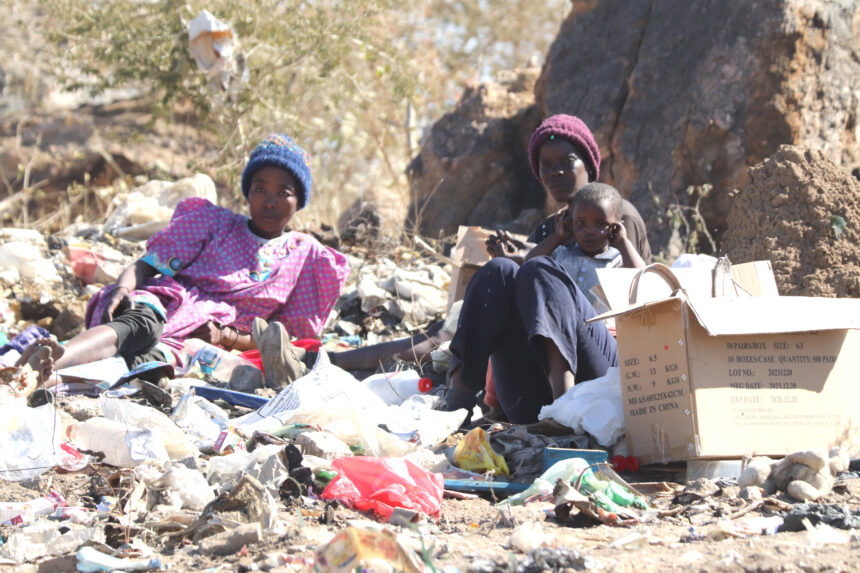The Chief Executive Officer of the Okahandja Municipality Alphons Tjitombo said they have formulated strategic plans to relocate the dumpsite situated at Ekunde extensions 4 and 5.
This statement follows the release of a video captured by this publication, revealing a group of individuals scavenging for food and items that they can sell for sustenance.
The dumpsite, which has been expanding over the years, now lies perilously close to residential areas allocated for habitation. It has unfortunately become not only a site for waste disposal, but also a desperate hunting ground for necessities.
When questioned about the timeline for the relocation, Tjitombo said despite a resolution by the former council to move the dumpsite, progress has been impeded due to the ongoing construction of a dual-carriage road.
The prolonged delay has forced many vulnerable individuals, predominantly women and school-age children, to continue exposing themselves to health risks.
Among them is Loide Malenge, an unemployed mother of three, who articulated that scavenging at the dumpsite is her sole means of supporting her family.
Accompanied by her young son and three-year-old daughter, she recounted finding occasional food scraps amidst their search for recyclable materials to sell.
Malenge’s plight is mirrored by many others, prompting compassionate responses from community members like Hilma Benyamen from Uuvudhiya constituency in the Oshana region, who expressed deep concern over seeing women and children resorting to such desperate measures.
She provided what assistance she could, emphasising the communal duty to support one another in times of hardship.
Malenge yesterday confirmed that with the help of Samaritans, her son managed to go back to school. However, more mothers are struggling to make ends meet.
Another resident grappling with unemployment in Okahandja, Maria Shitule, echoed the sentiment of economic desperation, stressing the scarcity of job opportunities. For her and others in similar circumstances, the reality of finding sustenance and necessities often leads them to the dumpsite.
The situation in Okahandja reflects a broader national crisis highlighted by a recent report by a local newspaper on acute food insecurity, which projects dire conditions for a significant portion of Namibia’s population.
The report warns that up to 85000 Namibians could reach phase four of emergency food insecurity between July and September, indicating severe shortages and heightened risks of malnutrition and disease-related deaths.
Economists have further criticised the inadequate agricultural output in Namibia, noting that all 14 regions are classified as being in crisis.
The period from April to June this year saw approximately 1.2 million people grappling with acute food insecurity, underscoring the urgent need for interventions to bridge food gaps and safeguard livelihoods.
The most vulnerable groups identified include the unemployed, marginalised communities, individuals lacking national documentation to access social safety nets, young children, pregnant and breastfeeding women, as well as pensioners across urban and rural areas.
Their plight underscores the critical need for sustained support and systemic improvements to alleviate widespread food insecurity in Namibia.
-lmupetami@nepc.com.na


